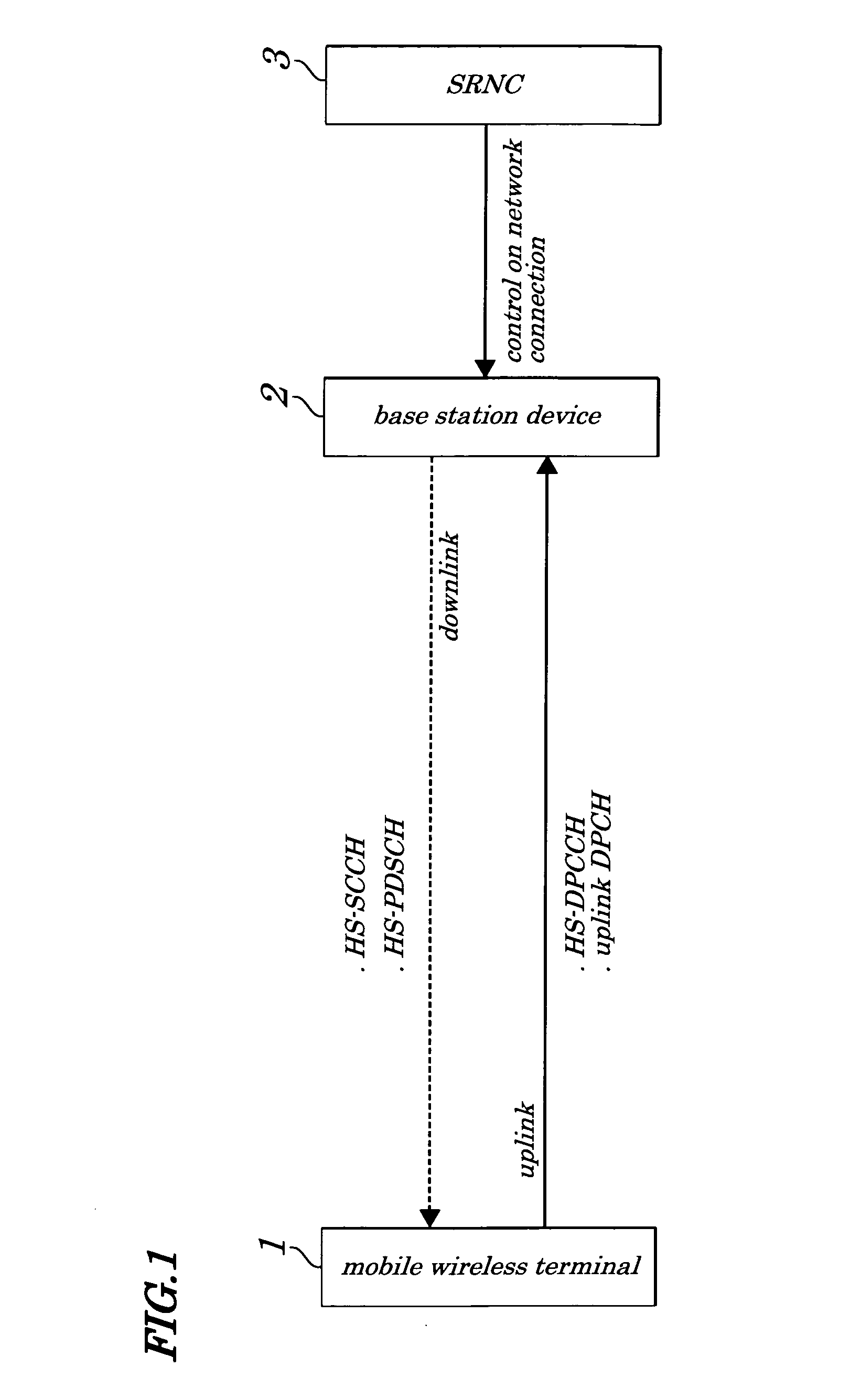Mobile communication system, and base station device and mobile wireless terminal used in same system
a mobile communication system and mobile wireless terminal technology, applied in the direction of power management, wireless commuication services, synchronisation arrangement, etc., can solve the problem of not being able to immediately reflect in the dpch whether the tfc is usable or unusable, and it is impossible to judge whether the expected transmission power value exceeds the maximum transmission power, etc. problem, to achieve the effect of improving throughput and/or communication quality
- Summary
- Abstract
- Description
- Claims
- Application Information
AI Technical Summary
Benefits of technology
Problems solved by technology
Method used
Image
Examples
embodiment
[0057]FIG. 1 is a diagram illustrating configurations of a mobile communication system according to an embodiment of the present invention. As shown in FIG. 1, the mobile communication system includes a mobile wireless terminal 1, a base station device 2, an SRNC (Serving Radio Network Controller) 3. Though not shown in FIG. 1, the mobile communication system, like an ordinary mobile communication system, further has a switching center, a communication controlling device, an HLR (Home Location Register), and a like. Moreover, the number of components making up the mobile communication system is not limited to that shown in FIG. 1.
[0058] As shown in FIG. 1, in the mobile communication system, when communications are carried out by applying the HSDPA (High Speed Downlink Packet Access) method, the base station device 2 transmits data through an HS-SCCH (High Speed-Shared Control CHannel) and an HS-PDSCH (High Speed-Physical Downlink Shared CHannel) in a downlink to the mobile wireles...
PUM
 Login to View More
Login to View More Abstract
Description
Claims
Application Information
 Login to View More
Login to View More - R&D
- Intellectual Property
- Life Sciences
- Materials
- Tech Scout
- Unparalleled Data Quality
- Higher Quality Content
- 60% Fewer Hallucinations
Browse by: Latest US Patents, China's latest patents, Technical Efficacy Thesaurus, Application Domain, Technology Topic, Popular Technical Reports.
© 2025 PatSnap. All rights reserved.Legal|Privacy policy|Modern Slavery Act Transparency Statement|Sitemap|About US| Contact US: help@patsnap.com



